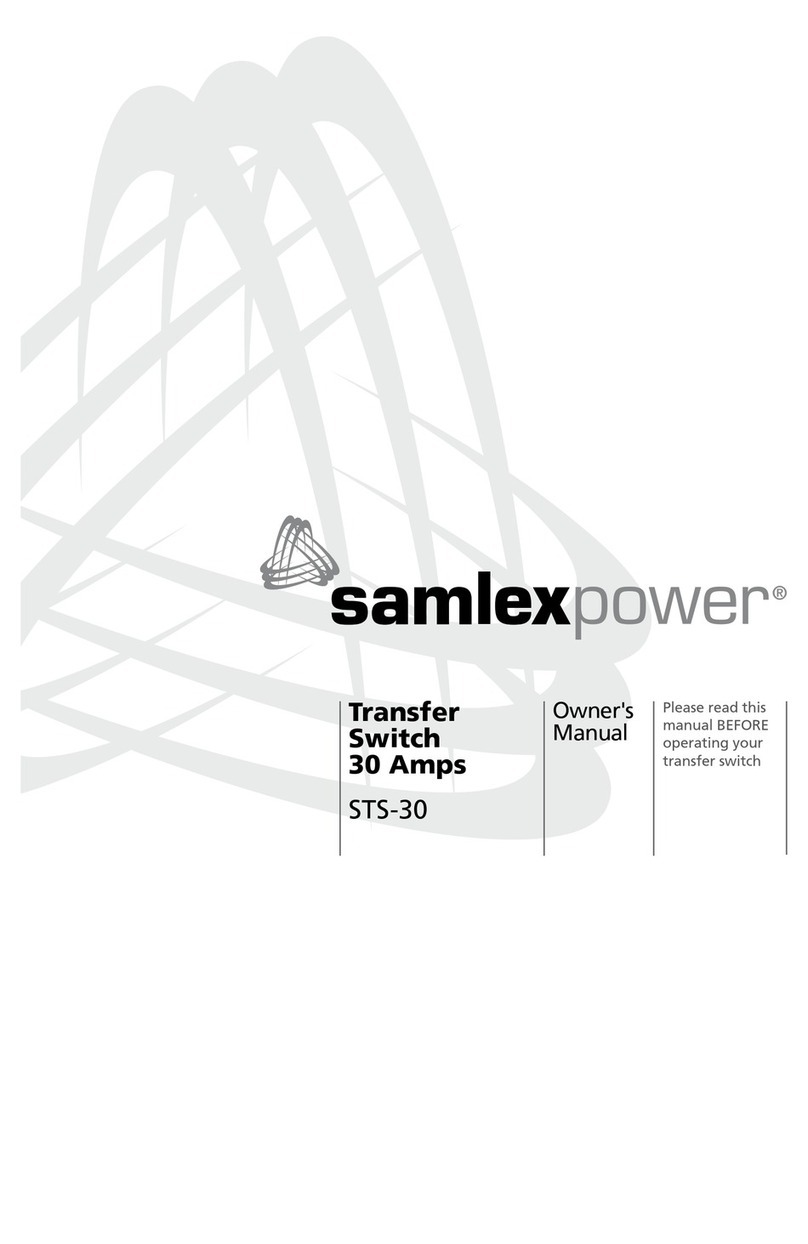
3
1
INTRODUCTION
Function of a Transfer Switch
In case of failure of the main AC power source like the electric utility power, it is desirable to switch
the critical AC loads to a standby / back up AC power source like a generator or an inverter. The
switching action should ensure that only one AC power source is connected to the AC loads at any
one time and that the electric utility power and the generator / inverter output power are never
connected in parallel but remain isolated
The electrical loads cannot be connected in parallel with the generator/ inverter and electric utility
power at the same time. This will cause the following damage and safety hazards:
-The electric utility line voltage is normally "stepped down" by a transformer before entering
the home / RV park / campground. The transformer will work in reverse when voltage is sent
through it in the opposite direction and will "step up" the voltage fed back into it. If the
electric utility power is interrupted (say the feeder section upstream is switched off by workers
for repairs), the generator / inverter will feed voltage back into the electric utility power lines,
this voltage will be stepped up by the transformer and will electrocute the workers that come
into contact with the utility lines.
-If the electric utility power and the generator / inverter are alive at the same time, the electric
utility power will be fed back into the generator/ inverter and the generator / inverter will get
damaged. There is also a potential of re!
Application of Transfer Switch in Homes
By installing a transfer switch at your breaker box and connecting a generator/inverter to the
transfer switch, you can run selected circuits for appliances such as a furnace, well pump, sump pump,
refrigerator, television, computer, printer or lighting circuit during a power outage, depending on the
capacity of your generator / inverter.
Application of Transfer Switch in Recreational Vehicles (RVs)
RVs have both a 12 VDC house or domestic system and a 120 VAC system. The DC system commonly
provides power for area lighting, stereo, water pumping and other loads requiring relatively small
amounts of power. The 120 VAC system powers larger loads like microwave ovens, hot water heaters,
washer /dryer, coffee machines, hair dryers, space heaters, heating and air-conditioning (HVAC) and
convenience outlets that supply power to audio, video and entertainment systems. The domestic
refrigerator is commonly supplied by both the 12 VDC and the 120 VAC system and sometimes
alternatively by propane.
Inverters are also used to provide AC power for dry camping where AC shore power is not available
or in cases where gensets are not permitted due to noise restrictions. Typically, the inverter only
supplies AC devices that are the highest priority such as microwave, entertainment and convenience
outlets. It is not practical to run loads like hot water heaters and HVAC systems from inverters that
are ultimately powered from batteries.
Frequently, the total AC power requirement of all the system loads exceeds the campground / RV
park’s power inlet and consequently, requires the genset to power the entire system




























